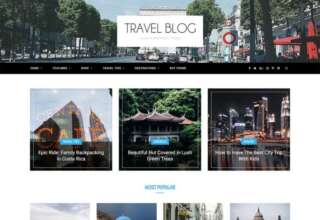
It’s the unofficial beginning of summer, and the rising temperatures mean your social mediascroll will soon be overrun withinfinity pools inSantorini, the cliff-hugging villages of Cinque Terre, and the blooming lavender fields of Provence. Or, if your friends are especially on-trend, the sunburnedterracotta roofs of Croatia’s Dalmatian coast.
“Croatia is huge,” says Andy Ross, head of product for the 40-year-old adventure travel companyExodus Travels. In recent years, he’s seen the country shift from an up-and-coming destination to a “very, very well-known” quantity. It is now the company’s fastest-growing European market.
There’s good reason for that: Croatia hasmore coastline than Portugal and France combined and more islands than the Maldives. Annual visitors to the country now quadruple the country’s population of 4.2 million.
But the surge in visitation has become controversial. Dubrovnik, Croatia’s most visited city, has become so swarmed with summer sightseers, that it—like Venice and Barcelona—is considering tourism restrictions. (Thanks, Game of Thrones fans.) Says Ross:“It’s [become] hard to find a time of year to have a peaceful, genuine experience in Dubrovnik.”
In the neighboring Balkans, the opposite is true: the same, untapped natural beauty, a fascinating mélange of cultures, but few crowds. And despite the region’s complicated war-torn history, the U.S. Department of State now considers the Balkan states safer than much of Western Europe.
Whether you start in Dubrovnik or head straight off the beaten path, here are the destinations to prioritise—no matter what your travel type. Your Mykonos-fatigued followers will thank you.
Best for Families: Lake Bled, Slovenia
While much of the region bakes in the summer heat, Slovenia stays more temperate, thanks to its lake-filled, forest-covered mountains. It also has relatively reliable infrastructure and high-end accommodations. According to Jonny Bealby, founder of the trailblazing travel outfitWild Frontiers, this accessibilityand maneuverability makes Slovenia a “brilliant country for family travel.”
How much time you’ll need: Five to seven days
What to see and do: Spend a day or two roaming the charming streets of Ljubljana, then head to thefairytale-like Lake Bled. Its 17th century church—set against the mighty Julian Alps—is one of the country’s most famous sites. But there’s more to the area than churches and castles; nearby Triglav National Park, which is named for the nation’s highest peak, has secret waterfalls, lakes, and canyons to explore.
Vintgar Gorge, a mile-long ravine with family-friendly walking trails that hang onto limestone cliffs, is also a popular choice. A scenic, 30-minute drive to Lake Bohinjprovidessofter adventures: paddle boarding, kayaking tours, and well-marked hikes. (Prioritise the ones to the roaring Savica Waterfall.) And for small children, there’s the Vogel Cable Car, offering jaw-dropping views of the mountain landscape.
Then head to Tromeja, a landmark near the small Alpine village of Kranjska Gora in the north. Adults will appreciate the small-town charm, while kids will get a kick out of stepping across the three-country border at which Slovenia meets Italy and Austria.
Where to stay: Book one of 31 classically styled rooms inVila Bled, the restored 1940s lakeside summer residence of Josip Broz Tito, the late president of Yugoslavia.
Best for road trippers: Durmitor National Park, Montenegro

This tiny country—roughly the size of Connecticut—is developing an outsized reputation for its stunning Adriatic coastline and varied national parks. Trains are limited and slow-going, so a car is required. But be warned: Many of Montenegro’s guardrail-free, single-lane routes cling to the edges of cliffs. They’re beautifulbut not for the faint of heart.
How much time you’ll need: Three to five days
What to see and do: Fly into Dubrovnik and wind your way into Montenegro on roads that hug the cerulean Bay of Kotor. Located deep within the massifs of the Dinaric Alps, the fortified coastal town of Kotor has 14th century ramparts—best explored at sunset, when the golden light bounces off Romanesque churches and into the shimmering waters. Then take a day to hike either of the two looming peaks in Lovcen National Park, where the views of the craggy landscape once caused George Bernard Shaw to wonder, “Am I in paradise or on the moon?”
Along the mountainous country roads that lead to the lakeside town of Pluzine, you’ll find the Ostrog Monastery, a 17th century Serbian Orthodox Church that was built directly into the rosy rock face of a sheer vertical cliff. Then it’s off to Durmitor National Park—the country’s star attraction. The hair-raising route along highway P14 weaves along the cliffs of Piva, through agricultural foothills, and on towards Crno Jezero, the park’s glacier-formed “Black Lake.” Your last stop: a few relaxing nights on the near-private islet of Sveti Stefan, which was once a 15th-century fortified coastal village and is now a spectacularAman resort.
Where to stay: Wild Frontiers’ Bealby recommends Poscenje Chalet, a small B&B near Durmitor whose owners double as expert adventure concierges.
Best for hikers: Accursed Mountains, Albania

The Albanian Alps, located in the northwest corner of the country, seem so impenetrable, locals call them the Accursed Mountains. But insiders have found them to contain age-old cultural appeal and unspoiled natural wonders, making Albania one of Exodus Travels’ most in-demand emerging destinations.
How much time you’ll need: Four to five days
What to see and do: Start with a taste of local life in the ancient, mosque-filled city of Shkoder, near the Montenegro border. There, old men play cards in the shade of the city’s parks, and young adults sip Turkish coffees at outdoor cafés. Then hop on a boat to the quaint village of Valbone, where an eight-hour mountain trek connects secluded villages to the dense Theth forest via still-functional mule paths. At a dizzying 5,889 feet above the valley floor, you’ll reach ValbonePass.From there, it’s a gentle descent through spongy pine-strewn forest paths before itendsat thehistoric Roman Catholic hamlet of Theth, for which the forest is named.
Where to stay: A handful of quaint inns in the village of Valboneletyou walk out the door and straight onto the trails. The most comfortable is the Rezidenca, a recent addition to the small, 13-year old Rilindja guesthouse, featuring oversized rooms with en-suite facilities, a rarity in this little-developed region.
Best for culture vultures: Mostar, Bosnia
Nearly demolished during the decade-long Yugoslavian conflict and horrific Bosnian War, the historic city of Mostar, an hour or two’s drive inland from the Dalmatian Coast, is emerging as the region’s cultural capital. Today, it’s a place where 16thcenturyand 17th century mosques and contemporary street art go hand in hand.
How much time you’ll need: One to three days
What to see and do: The recently-rebuilt Stari Most, an important example of 16th century Islamic architecture whose name translates to “old bridge,” is picturesque enough to single-handedly put this city on the map: Its arched point casts a mirror-like reflection into the green waters of the Neretva River. It serves as a beacon of the city’s recovery—unlike some buildings that still havebullet holes toserve as lasting reminders of the ravages of war.
Today, more than 100 murals can be found across the city. Some of the best are at “Sniper Tower,” an eight-story bank building that was once used as a base by Croats and Serbs during the conflict; now it’s an artistic response to the crisis, with emotionally charged graffiti lining its shelled-out interior and pockmarked exterior walls.
Just a 20-minute drive away, along the Buna river, the 15th century Sufi monastery of Blagaj Tekkeoffersa respite from all the intensity. It’s also convenient to Restoran Romanca, a traditional restaurant with picnic tables outside, white tablecloths inside, and an on-site vineyard.
Where to stay: Bealby books his guests into Hotel Kapetanovina, a small boutique property in the center of Mostar, with commanding views of the famed bridge.
Best for urbanites: Sofia, Bulgaria
Despite being continuously inhabited since at least 7,000 B.C. (and claiming its fair share of Cold War bunkers and Communist-era buildings) Sofia has become a modern destination. With excellent restaurants and shopping,plus an impressive number of public parks, Bealby likens it to Prague, Budapest, or Berlin—only quirkier and more affordable.
How much time you’ll need: Two to four days
What to see and do: Sofia’s wide boulevards, such asOborishte Street andVitosha Boulevard, are lined with cafes, art galleries, and fashionable shops—and they double as prime spots for people-watching. Most restaurants offer regional variations on classic Balkandishes (think grilled-meat platters and oversized salads). Standouts include A:Part:Mental, set in an apartment with uniquely designed rooms and a menu of vegetarian and vegan offerings,andRose, a light-flooded, pan-European lunchtime spot that transitions to a violet-hued cocktail bar by night.
But Sofia’s history is too fascinating to be ignored. Look no farther than the gold-covered domes of the Alexander Nevski Cathedral,the underground catacombs of Saint Sofia,andthe ancient Roman complex of Serdica, which wasrestored in 2016. Now the fourth century ruins are protected by a large, glass dome through which visitors can take in the bustling urban activity above—a perfect mix of age-old culture and modern-day buzz.
Where to stay: At the slick Sense Hotel Sofia, you canviewthe palatial National Assembly and the Alexander Nevski Cathedral through floor-to-ceiling brass shutters.
[“source=hindustantimes”]


















